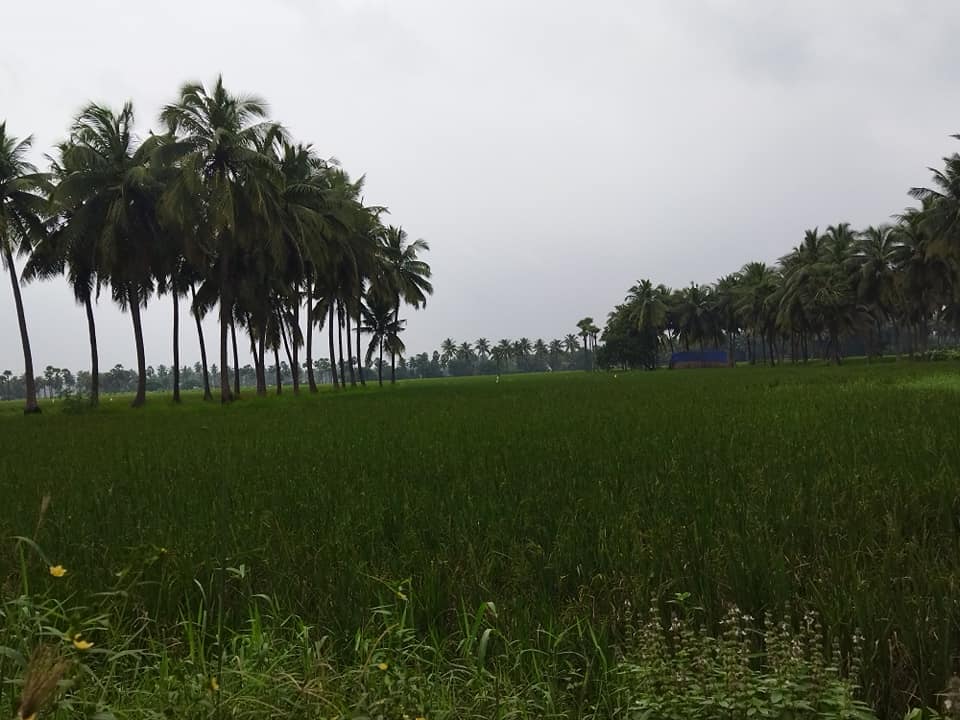The average per capita monthly consumption is estimated at 8.7 kg in urban areas and 10.56 kg in rural areas.

Godavari delta is conducive for cultivating rice. (South First)
Not just certain vegetables, superfine rice varieties, too, are burning a hole in the pockets of customers in Andhra Pradesh.
The per capita monthly consumption of Andhra’s staple food is 8.7 kg in urban areas and 10.56 kg in rural areas. While the government distributes rice to below poverty line families through fair-price ration shops, others depend on the open market.
Sona Masoori and Samba Masoori are the varieties in demand in the state. However, farmers are not keen on growing these two fine varieties. Due to their shortage, millers, and traders pay a premium for procuring these two varieties.
Low yield and the government’s aggressive procurement of rice directly from the source through Rythu Bharosa Kendras (RBKs) are cited to be the reasons prohibiting farmers from cultivating these varieties.
Sona Masoori and Samba Masoori that were sold for ₹45 and 52 per kg, respectively, in the open market, have gone up to ₹60 and ₹62.
The state government has fixed the procurement price of grade-A grain at ₹1,960 per quintal, ₹1,470 per 75 kg. The price for the common category is fixed at ₹1,940 per quintal, and ₹1,455 per 75 kg. Grading is based on the moisture content.
“It’s like a minimum guarantee return to the farmer if he sells the produce to the government. While the yield of the fine variety rice is around 32 bags per acre it will be roughly 40 to 41 bags in other varieties,” rice trader L Sudarshan of Guntur told South First.
“Obviously, farmers are showing interest in cultivating other rice varieties with better yield. They also have the guarantee and security of payment from the government unlike private millers. Payment from the government gets directly credited into their bank accounts,” he added.
A miller said fine variety rice is not available even if they are willing to pay a premium.
“There is no supply of the fine variety to the open market. Farmers are showing interest in only cultivating high-yielding varieties that have the potential to be sold in other states. We were ready to pay ₹2,750 per 70 kg bag for fine variety, but there is not much supply,” the private miller rued.
The main rice growing season of the state is Kharif (wet season) during which 60 percent of rice is cultivated. The season starts from May-June and ends in November-December.
The Rabi (dry Season) falls between the months of November-December to March-April and 35 percent of rice is grown. Edagaru (summer) is another season during which rice is grown between April-March and July-August, mostly in parts of Nellore, Chittoor, Srikakulam, and some districts in Telangana.
Andhra Pradesh is one of the leading producers of rice in India. In 2020-21, the state produced 128.95 lakh tonnes of rice, which is 12 percent of the total rice production in India. The state has a long history of rice cultivation, and the crop is grown in 13 districts.
The Godavari delta is the main “rice bowl”. These areas are characterized by fertile soil, abundant water resources, and a favorable climate for rice cultivation. The other major rice-producing districts in Andhra Pradesh are Krishna, Guntur, Srikakulam, Vizianagaram, and Chittoor.
In Andhra Pradesh, paddy is cultivated in more than 22 lakh hectares during Kharif and Rabi seasons.
RBKs are first-of-its-kind seeds-to-sales, single-window service centres set up by the state government. These multi-functional kiosks act as a one-stop solution for all requirements and grievances of farmers in the state.
“Why would we let the miller take the charge and decide the price when the government is ready to give us a premium price? Moreover, since the yield is more and the government guarantees procurement of every grain, we would cultivate high-yield varieties,” a farmer from Kovvuru said.

May 01, 2024

May 01, 2024

Apr 28, 2024

Apr 22, 2024

Apr 21, 2024

Apr 19, 2024